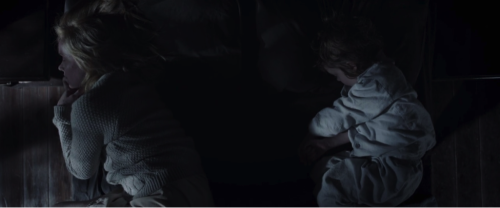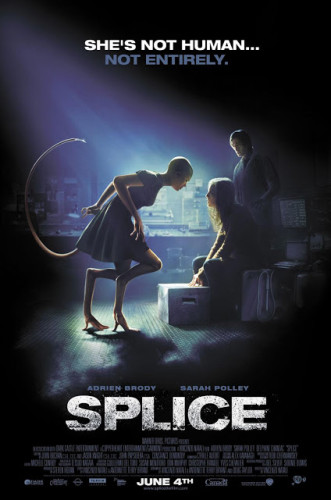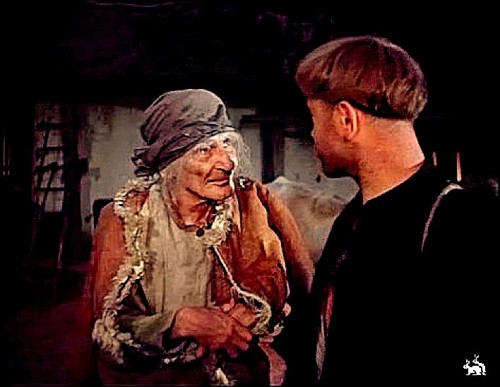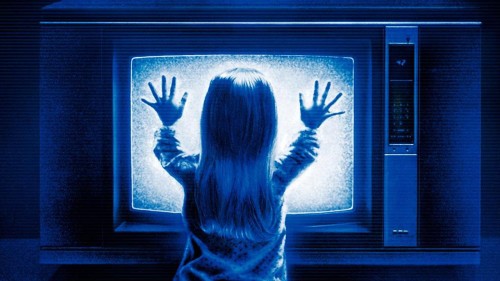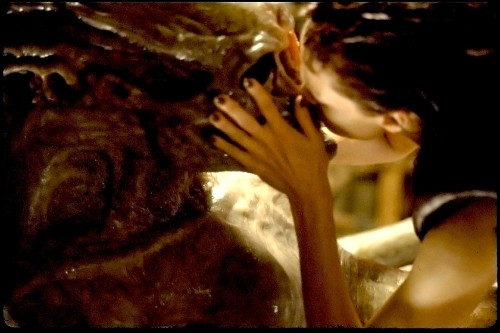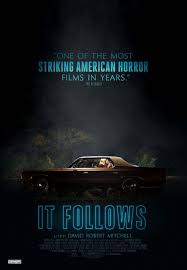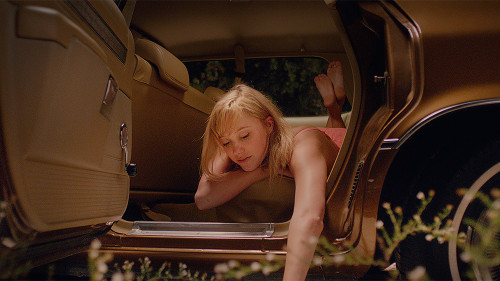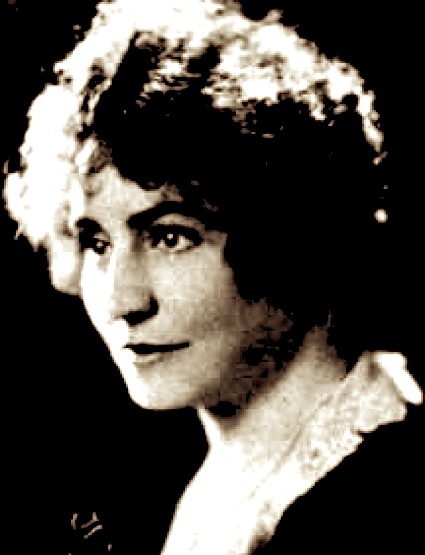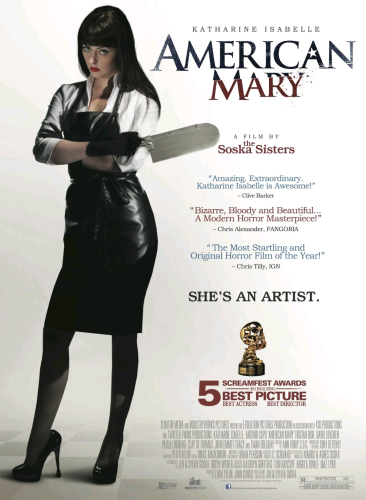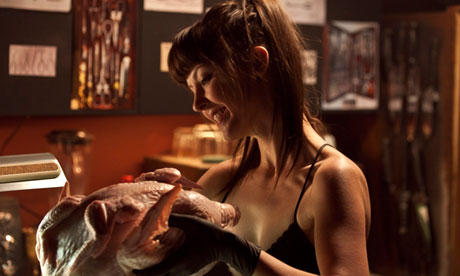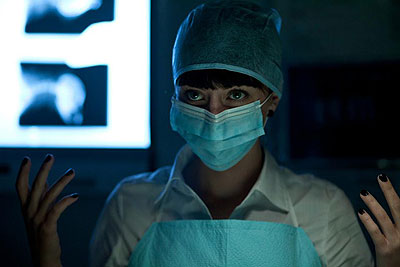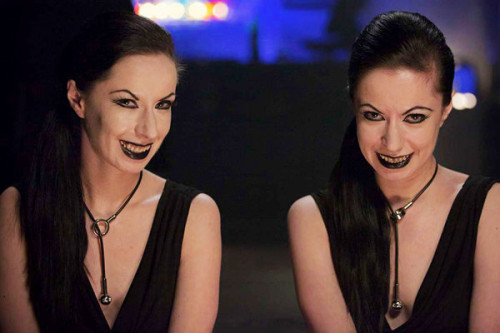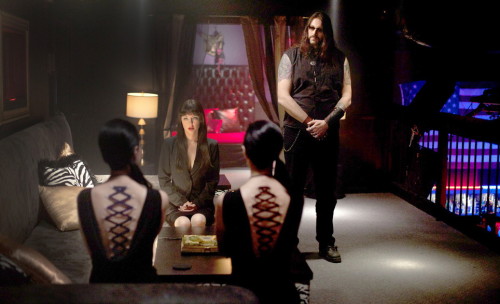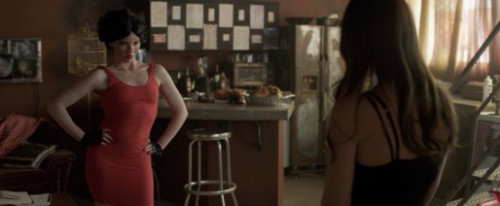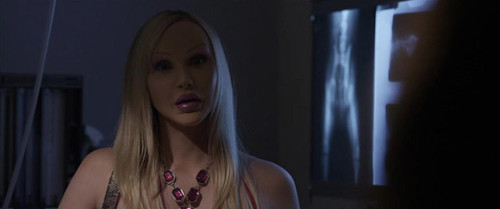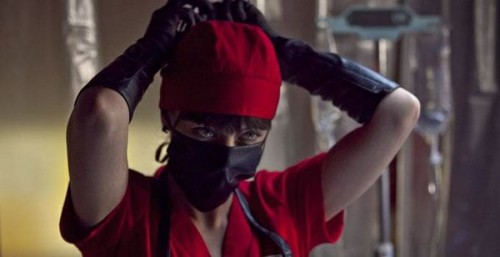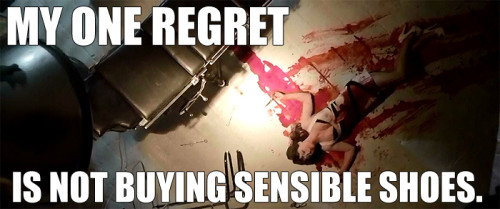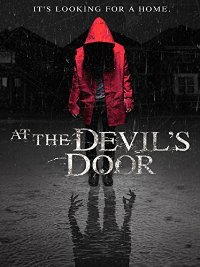This guest post by Elizabeth King appears as part of our theme week on Bad Mothers.
I don’t typically like horror movies. I have always been sort of a scaredy-cat when it comes to anything horror-related, and I was completely terrified when I watched The Babadook with my roommates several months ago. To tell the truth, I barely saw the Mr. Babadook creature himself, because I would immediately cover my eyes when I sensed an appearance was pending. For many reasons, the film is truly horrifying.
To summarize (and spoil) the film’s plot: the two main characters are a mother and son, Amelia and Sam. Amelia’s husband and Sam’s father died in a car accident while driving Amelia to the hospital while she was in labor and about to give birth to Sam. We join mother and son, several years later in the present day, and see that Sam ostensibly has some severe behavioral issues (including self-hard and violence towards others), and that Amelia has not yet recovered and found peace after her husband’s untimely death.
One evening, Sam pulls a book off of his shelf for Amelia to read to him at bedtime. What he brings to her is a book neither of them have seen before, and the contents quickly reveal themselves to be very dark and violent. The title of the book is Mr. Babadook, and Mr. Babadook is a threatening, scary, and sinister monster that foretells of his haunting of homes and ability to provoke violent behavior and terror from others. Naturally this scares the hell out of Sam, and he fixates on this character both as an object of his fears, and the sense of protection he feels for his mother. As Sam’s obsession and fear of the Babadook worsen, Amelia’s nerves fray, and she is emotionally and physically exhausted trying to care for her son and ease his fears. Her exhaustion turns to madness, and she eventually turns on Sam, drugging him and attempting to harm or kill him.
The film resolves in an extremely satisfying way (the best I have ever seen a horror movie end) with the family managing to face their fears after being consumed by them, and saving their own lives as mother and son. So yes: the film is disturbing and exceptionally scary by my standards, but with a message so powerful that it warrants further conversation.
Most people I talked to and most of the reviews that I read about The Babadook concluded that the film is about motherhood or mother-son relations. While I agree, I also really tuned in on the complicating element to this whole narrative, which is that the mother is mentally ill. Throughout the film, Amelia is very obviously in the deepest darkest depths of a major depressive episode, initiated by her husband’s death, and felt helpless in the face of her maternal responsibilities. I interpreted Mr. Babadook not as the difficulties of motherhood personified, but rather as an excruciating metaphor for depression, and the ways that mental illness can be further complicated and stigmatized when they are present in mothers.
Throughout The Babadook, Amelia is judged and later rejected by her sister when Amelia expresses her desperation regarding Sam’s behavior. Amelia can’t live up to her sister’s expectations of a perfect mother, and is therefore deemed unworthy of support. Sam’s school administrators also stigmatize Amelia’s condition and her parenting abilities, and appear to conspire against her instead of offering support. They all see her as a bad mother, when in fact she is struggling to cope with depression, and needs their help more than ever.
Amelia is also in denial of her depression, and seems to internalize the “bad mother” judgement, in large part due to her understandably complicated feelings towards her son. She feels resentful and claustrophobic around Sam, as she sees him as the cause of her pain: the death of her husband. Motherhood not only was the birth of her depression (her husband died the day Sam, her only child, was born), but also what exacerbated her depression and ultimately made it unbearable.
What clinches the depression metaphor for me is Amelia’s strong denial and inability to acknowledge the extent of her problems. She repeatedly says she is fine, and never names her depression, which takes shape as the terrifying and destructive Babadook. Denial is never a good thing, particularly when addressing mental illness. As the Babadook says, “The more you deny me, the stronger I’ll get.” This is perhaps the most true threat the Babadook made, and also the best possible way to describe what will happen when depression goes unchecked. Unacknowledged depression like Amelia’s is bound to reach a tragic critical mass unless measures are taken to cope and heal.
As her depression symptoms intensify (we see repeated scenes of Amelia staying awake all night, not eating, lacking the energy to work, becoming paranoid, etc.), Amelia devolves into the Babadook, and is totally possessed by her illness. As a result she seeks to eliminate the ostensible source of the problem: her son. Instead of being a mother to Sam, the illness warps Amelia into an imminent threat that Sam has to protect himself against. And yet, the one person who doesn’t see Amelia as a bad mother is the subject of her angst and pain: her son.
At the extremely touching and horrifying climax of the film, Sam has his mother bound with ropes on the floor of their basement at the peak of her possession by the Babadook, Sam yells at his mother, “I know you don’t love me! I know the Babadook won’t let you!” I was simultaneously terrified of what was happening, and heartbroken by Sam’s message to his mother. He needed her to understand that it wasn’t her, it was her depression, the unaddressed grief she felt that was destroying their family. She was a good mom and wanted to love her son, but the Babadook’s power over her made it impossible for that to happen.
After Amelia, with Sam’s help, is able to confront her pain and can no longer deny her depression (she screams at Mr. Babadook: “This is my house!” a sign that she is ready to reclaim her life), she and Sam are able to cope and move forward. At the very end of the movie, we see Amelia tending to the Babadook creature, shackled and very tightly locked away in the basement of her home. She tells Sam that they can discuss the creature when he’s older. Not only has Amelia confronted her depression, she also acknowledges that while she will never be able to completely subdue the pain of her husband’s death, she must face it.
Elizabeth King is a freelance writer based in Chicago, Ill. She is an ardent feminist and environmentalist, and a huge fan of ice cream. You can find her on Twitter @ekingc, and Instagram @mr.sweatpants.
